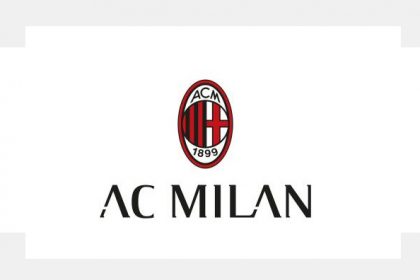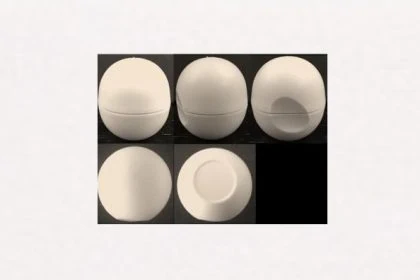The trade mark MILAN of the German stationery manufacturer has prevailed against the famous football club AC MILAN: AC MILAN cannot claim protection for stationery because of likelihood of confusion with the MILAN mark, European Court (CFI) ruled.

AC MILAN is one of the absolute top football clubs in Europe. And of course, AC MILAN claims protection for its eponymous trademark in many areas, in short, for everything that makes sense in terms of merchandising. In this context, in February 2017, AC MILAN filed an application for international registration with the European Union Intellectual Property Office (EUIPO) for the word and figurative mark AC MILAN, designating the European Union and claiming Nice Class 16 stationery.
This IR trade mark was also granted and published. Thereupon, the German stationery manufacturer InterES Handels- und Dienstleistungs Gesellschaft mbH & Co. KG filed an opposition against this trade mark on the grounds of likelihood of confusion with the German word mark MILAN, which has been protected as a trade mark for stationery since 1984. As it turned out, this was successful, as both the Opposition Division and the Board of Appeal, which was subsequently seised, upheld the opposition. AC MILAN brought an action against this before the European Court of First Instance (CFI).
Action by AC MILAN before the CFI
The dispute before the CFI was mainly about the proof of use of the earlier German trade mark MILAN. The Board of Appeal had not only taken into account invoices, catalogues, etc. from the relevant five-year period for its decision, but also additional evidence that did not originate from the relevant period. In addition, the applicant AC MILAN complained that the place of use of the earlier mark had not been sufficiently proven, all the more so because the invoices submitted as proof were not addressed to end consumers, but to retailers – an important aspect for this legal dispute, as a national German mark is opposed to AC MILAN’s IR mark.
Finally, AC MILAN argued that there was no likelihood of confusion at all, because the German trade mark MILAN had been used on the German market both as a word mark, but also in combination with an additional figurative element, namely the head of a bird of prey.
However, the CFI rejected the objections.
Use of the MILAN trade mark in the 5-year period
Even catalogues, invoices and sales figures that do not originate from the relevant 5-year period or are undated and are therefore not relevant in themselves as evidence of genuine use of the earlier mark in the relevant period must nevertheless be taken into account, according to the CFI. The CFI emphasised that continuity of use is one of the relevant indicia and that the commercial life of a product generally extends over a certain period of time. Therefore, documents outside the relevant period were not irrelevant, but had to be considered and assessed together with the other evidence.
The existence of brochures and catalogues written in German as well as price lists stated in euros suggested distribution throughout Germany, the CFI continued, thus also rejecting the accusation that the place of use had not been proven. Above all, the imprint in one of the intervener’s catalogues had also clearly given the name and address in Germany. In doing so, the court emphasised the established case law according to which the actual use of the trade mark refers to the market on which the proprietor of the trade mark is active and on which he hopes to exploit his trade mark – and not in a use directed at end consumers.
The CFI also rejected AC MILAN’s objection with regard to the established likelihood of confusion. The fact that the German stationery manufacturer also proved the use of its MILAN mark with evidence containing an additional figurative element of a raven’s head did not change the existing likelihood of confusion, the CFI ruled.
AC Milan and MILAN: likelihood of confusion
In the case of the AC MILAN mark, the relevant consumers for the purposes of establishing likelihood of confusion would pay attention in particular to the word element, especially as these are reproduced in capital letters and in a stylised font. The word element “Milan”, in turn, will be perceived either as a reference to the Italian city of Milan, or to the male first name Milan, or to a species of bird of prey, the European Court explained. The word element “ac milan” nevertheless constitutes the dominant element of the mark applied for, despite the low distinctiveness of the element “Milan”, and there is thereby a likelihood of confusion with the mark MILAN for the stationery goods claimed.
AC MILAN argued in vain that the Board of Appeal had not taken into account the high profile of the sign AC MILAN and the reputation of the football club AC Milan when assessing the likelihood of confusion. The CFI rejected this as well. On the contrary, it was even the case that, according to the case-law, only the reputation of the earlier mark, and not that of the mark applied for, is to be taken into account when assessing whether the similarity gives rise to a likelihood of confusion (ECJ 2009, Aceites del Sur-Coosur v Koipe, C-498/07 P).
The action brought by AC MILAN was therefore dismissed in its entirety. The famous football club cannot claim protection for stationery due to likelihood of confusion with the earlier German trade mark MILAN.
Do you also want to protect or defend a trademark?
Our lawyers have many years of expertise in trade mark law as well as in the entire field of intellectual property and are entitled to represent you before any court – in Germany and also internationally.

Sources (including the picture):







Leave a Reply